#The Roman town of Marcianopolis
Text

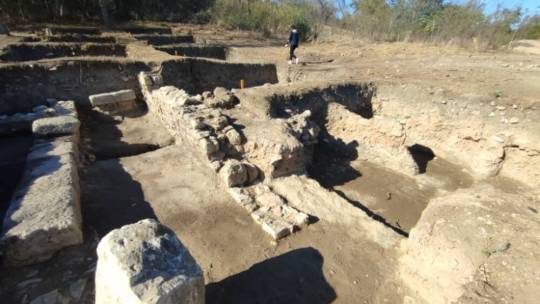
Archaeologists Discovered Roman Floor Mosaics in Bulgaria
Archaeologists discovered floor mosaics with early Christian designs and nearly 800 artifacts in the archaeological reserve of Marcianopolis in Devnya, in the northeastern part of Bulgaria.
The Roman town of Marcianopolis (present-day Devnya) in northeastern Bulgaria appears to have originated as a Thracian settlement. It was later inhabited by Hellenized settlers from Asia Minor and named Parthenopolis.

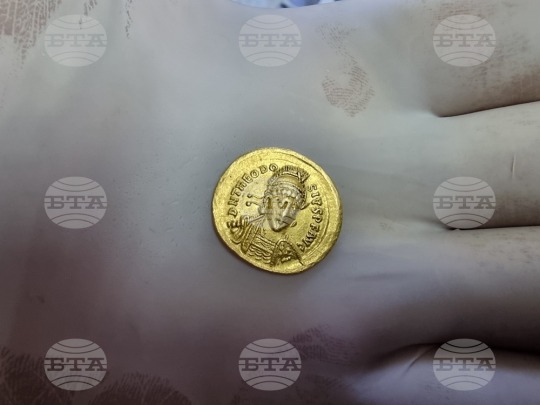
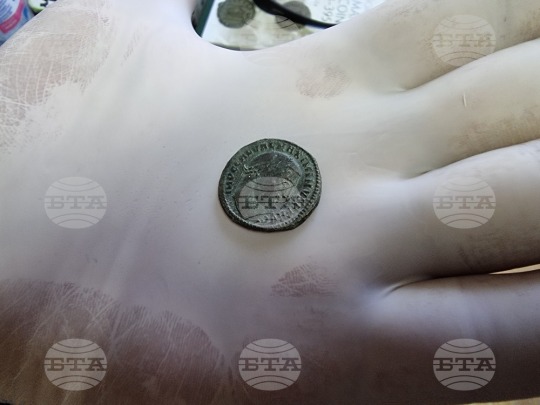
Roman Marcianopolis was established around 106 CE, following Trajan’s campaigns in Dacia to the north. The settlement was named after his sister, Ulpia Marciana. At the crossroads between Odessos (modern Varna), Durostorum, and Nicopolis ad Istrum, as well as the location of plentiful springs, Marcianopolis became a strategically important settlement.
Diocletian’s administrative reforms in the late third century CE divided Moesia Inferior into Moesia Secunda and Scythia Minor, with Marcianopolis serving as the former’s administrative capital. Marcianopolis experienced its most prosperous period during the middle of the fourth century CE. From 367 CE to 369 CE, the eastern emperor Valens used Marcianopolis as his winter quarters during campaigns against Visigoth incursions in the region. During this time, it served as the Eastern Empire’s temporary capital.

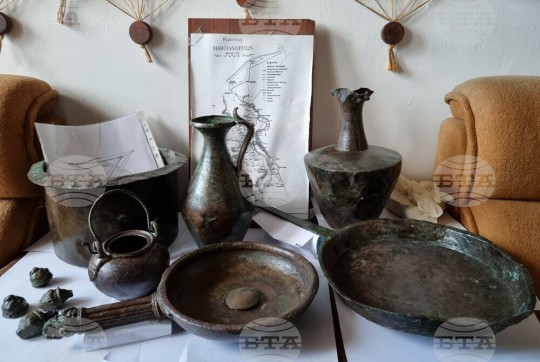

Floor mosaics with early Christian designs were found in the remains of a building. Archaeologists are not yet sure whether it was a public building or it belonged to a rich Roman citizen.
The tentative dating of the mosaics is in the first half of the 4th century AD.
The finds from the current archaeological season in Devnya contain another thousand bronze coins, several clay lamps and two clay vessels, which are awaiting scientific processing and restoration.
During the past archeological season, researchers restored bronze vessels discovered in the 1990s in a brick-walled tomb dating to the late 2nd – early 3rd century.
The vessels had a ritual use and were related to the personality of the person buried, Mosaic Museum director Ivan Sutev said in a statement to BTA.


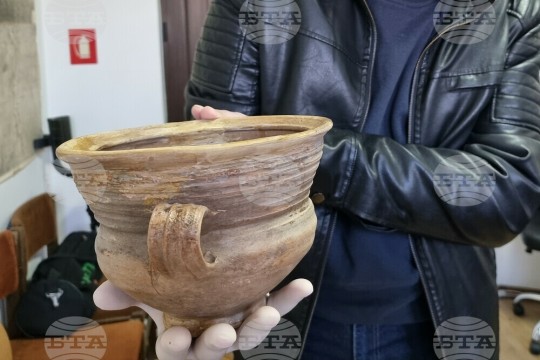

They are richly decorated and the workmanship is exquisite, he added. The find includes a vessel for pouring liquids as offering to a deity, and a wine jug with a trefoil mouth (oenochoe). A simple kitchen pan was also found along with these. All this leads archaeologists to suggest that a Roman citizen of Marcianopolis may have been laid to rest in the tomb, but that he may have had more specific functions: a soldier, a cook, or even a priest, Sutev said.
Pottery that was discovered in the basilica’s environs during excavations in 2023 has since been restored. Among these are a mortarium vessel for liquids and an exquisite crater-shaped pot for liquids. These were located in the structure with the mosaic floors. Coins from the time of Emperor Theodosius II were also found scattered on the floor.
In 447, Attila’s Huns captured and destroyed Marcionopolis after conquering the entire Balkan Peninsula but failing to capture Constantinople. That is determined by 20 gold coins scattered on the floor of the building being studied. On one side of the coins is an image of Theodosius II, while on the other is the patron goddess of Constantinople. Among the coins discovered during the Marcianopolis excavations were those from the city’s founding in the second century. The latter are dated to the sixth century, around the time of Emperor Justinian.
By Oguz Buyukyildirim.
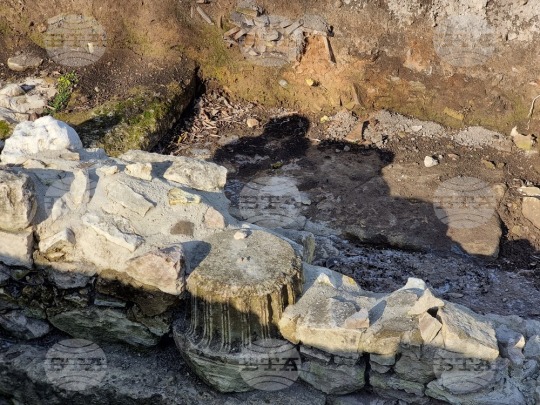
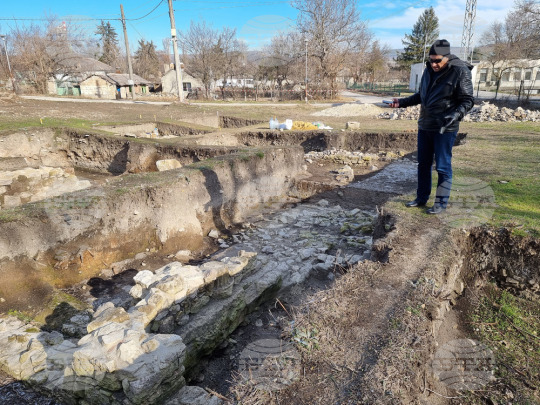
#Archaeologists Discovered Roman Floor Mosaics in Bulgaria#The Roman town of Marcianopolis#gold#gold coins#roman gold coins#ancient artifacts#archeology#archeolgst#history#history news#ancient history#ancient culture#ancient civilizations#roman history#roman empire#roman art#Emperor Theodosius II
44 notes
·
View notes
Photo

Asclepius Hygeia and Telesphoros
On the many discovered inscriptions we find Thracian, Greek and Latin names of individuals. Apart from the health-giving deities Asclepius, Hygeia and Telesphoros, here were worshipped Zeus and Hera, the Thracian Horseman, Dionysus, Hermes, Aphrodite. This is evident from their stamping on the Pautalian bronze coins, which the city was allowed to mint between the reign of Antoninus Pius (138-161) and Caracalia (21 1-217). And when Emperor Septimius Sever (193-211) and his family came to visit Pautalia it was only natural to emit a special emission.
In the late antiquity (end of 4th – 6th c.) a stone fortification was built on the Hissarlak hill, which occupied an area of 2.12 hectares
From the epigraphic monuments and the rescue archaeological excavations conducted in Kyustendil we learn of the different professions and trades in Roman Pautalia. Namely: retail dealer, cook, innkeeper, tailor of tent skins, sculptor, jurist. One inscription bears the names of the architects Laomedon and Glaukias. Many potter’s workshops were set up for common earthenware and fine table
ceramics. The long nights required clay lamps, which imitated the basic types of the period. A lamp mould was uncovered, which is evidence of local production. Large workshops produced mass building ceramics such as bricks, roof tiles and tubes, to meet the demands of the growing urbanization of this center on the upper Struma.
Augusta Traiana and Pautalia are so far the two cities in the present-day Bulgarian lands, which feature developed local bronze produc-tion. Doubtlessly, the ore deposits in the vicinity were an important factor. The casts were primarily bronze appliques for chariots and carts (usually busts of the gods Apollo, Athena, Heracles, Pan, Eros, the river god Strimon, etc., statuettes and vessels.
A large stonecutting workshop functioned in the city for the needs of construction and interior decoration. This is evident from the strong stonewalls built in the lowland and up on the Hissarlak, from the uncovered ruins of private, public and cult edifices (bases, capitals, columns, friezes, frontons), from the street pavement. An inscription tells us about marble working istanbul tourism conference. Big and smaller statues were made, as well as votive tablets with the images of Asclepius-Hygeia-Telesphoros, Zeus and Hera, Apollo, Heracles. The mosaic art also flourished in the city. A multitude of black-and-white and polychrome floor mosaics have been found during archaeological excavations, which are indicative of local ateliers for their laying.
Within the territory of Pautalia was the fortress of Germania (present-day Sapareva Banya). The name derives from a Thracian word (geermes) meaning “warm, hot”. This is the site of the only geyser in the country. Germania is the birthplace of Velisarius, general of Emperor Justinian the Great (527-565). In the southernmost part of the Pautalian territory, in the direction of Blagoevgrad, was the Thracian village of Skaptopara. Its inhabitants had become quite affluent – the land was good, the mineral baths were visited by many, and the local fair gathered a lot of people. However, the peasants began to suffer losses from the provincial officials and some military
men, especially during the bathing proce-dures or at the marketplace. These did not pay anything for food or entrance. An inscription found in Gramada quarters (Blagoevgrad) contains their appeal to Emperor Gordian III (238- 244). The document was written by a Pautalian defense lawyer, dealing with disputes in the province. The inhabitants mentioned that if they were not rendered help, they would leave this place for good.
Constanta region in North Dobrudja
Emperor Marcus Ulpius Trajan conquered the stubborn Dacians in 106 and founded the province of Dacia. But there was no city called “Victory City” there. So, he founded Tropaeum Traiani (Trajan’s Trophy) (at Adamclisi village, Constanta region in North Dobrudja) and erected an impressive memorial complex in memory of the perished Roman legions. Its location however was in Lower Moesia. Then he founded Nicopolis ad Istrum and Marcianopolis, called after his sister. These two cities then lied within the province of Thrace. In the south-westernmost parts of the province, near Macedonia and Achaia, was constructed Nicopolis ad Nestum or Mestum, which in translation means “City of the victory at Mesta river”.
Trajan has not fought battles in this region and this name is a little perplexing. Today the ruins of Nicopolis ad Nestum can be seen at Garmen village, 7 km northeast of the town of Gotse Delchev, not far away from the present-day Bulgarian-Greek border. In contrast to the garrisons and civilian settlements on the right bank of the Danube, where the climate was harshly continental, here the natural conditions were wonderful – mild winter, warm summer, pleasant spring and autumn.
0 notes
Photo
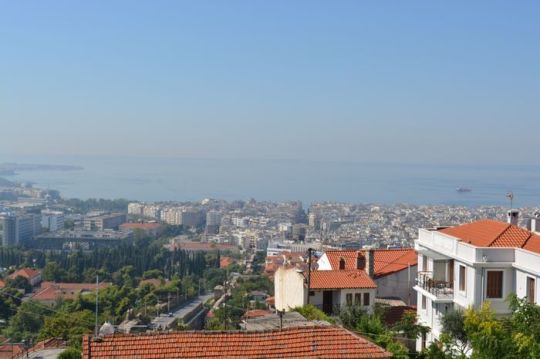
Asclepius Hygeia and Telesphoros
On the many discovered inscriptions we find Thracian, Greek and Latin names of individuals. Apart from the health-giving deities Asclepius, Hygeia and Telesphoros, here were worshipped Zeus and Hera, the Thracian Horseman, Dionysus, Hermes, Aphrodite. This is evident from their stamping on the Pautalian bronze coins, which the city was allowed to mint between the reign of Antoninus Pius (138-161) and Caracalia (21 1-217). And when Emperor Septimius Sever (193-211) and his family came to visit Pautalia it was only natural to emit a special emission.
In the late antiquity (end of 4th – 6th c.) a stone fortification was built on the Hissarlak hill, which occupied an area of 2.12 hectares
From the epigraphic monuments and the rescue archaeological excavations conducted in Kyustendil we learn of the different professions and trades in Roman Pautalia. Namely: retail dealer, cook, innkeeper, tailor of tent skins, sculptor, jurist. One inscription bears the names of the architects Laomedon and Glaukias. Many potter’s workshops were set up for common earthenware and fine table
ceramics. The long nights required clay lamps, which imitated the basic types of the period. A lamp mould was uncovered, which is evidence of local production. Large workshops produced mass building ceramics such as bricks, roof tiles and tubes, to meet the demands of the growing urbanization of this center on the upper Struma.
Augusta Traiana and Pautalia are so far the two cities in the present-day Bulgarian lands, which feature developed local bronze produc-tion. Doubtlessly, the ore deposits in the vicinity were an important factor. The casts were primarily bronze appliques for chariots and carts (usually busts of the gods Apollo, Athena, Heracles, Pan, Eros, the river god Strimon, etc., statuettes and vessels.
A large stonecutting workshop functioned in the city for the needs of construction and interior decoration. This is evident from the strong stonewalls built in the lowland and up on the Hissarlak, from the uncovered ruins of private, public and cult edifices (bases, capitals, columns, friezes, frontons), from the street pavement. An inscription tells us about marble working istanbul tourism conference. Big and smaller statues were made, as well as votive tablets with the images of Asclepius-Hygeia-Telesphoros, Zeus and Hera, Apollo, Heracles. The mosaic art also flourished in the city. A multitude of black-and-white and polychrome floor mosaics have been found during archaeological excavations, which are indicative of local ateliers for their laying.
Within the territory of Pautalia was the fortress of Germania (present-day Sapareva Banya). The name derives from a Thracian word (geermes) meaning “warm, hot”. This is the site of the only geyser in the country. Germania is the birthplace of Velisarius, general of Emperor Justinian the Great (527-565). In the southernmost part of the Pautalian territory, in the direction of Blagoevgrad, was the Thracian village of Skaptopara. Its inhabitants had become quite affluent – the land was good, the mineral baths were visited by many, and the local fair gathered a lot of people. However, the peasants began to suffer losses from the provincial officials and some military
men, especially during the bathing proce-dures or at the marketplace. These did not pay anything for food or entrance. An inscription found in Gramada quarters (Blagoevgrad) contains their appeal to Emperor Gordian III (238- 244). The document was written by a Pautalian defense lawyer, dealing with disputes in the province. The inhabitants mentioned that if they were not rendered help, they would leave this place for good.
Constanta region in North Dobrudja
Emperor Marcus Ulpius Trajan conquered the stubborn Dacians in 106 and founded the province of Dacia. But there was no city called “Victory City” there. So, he founded Tropaeum Traiani (Trajan’s Trophy) (at Adamclisi village, Constanta region in North Dobrudja) and erected an impressive memorial complex in memory of the perished Roman legions. Its location however was in Lower Moesia. Then he founded Nicopolis ad Istrum and Marcianopolis, called after his sister. These two cities then lied within the province of Thrace. In the south-westernmost parts of the province, near Macedonia and Achaia, was constructed Nicopolis ad Nestum or Mestum, which in translation means “City of the victory at Mesta river”.
Trajan has not fought battles in this region and this name is a little perplexing. Today the ruins of Nicopolis ad Nestum can be seen at Garmen village, 7 km northeast of the town of Gotse Delchev, not far away from the present-day Bulgarian-Greek border. In contrast to the garrisons and civilian settlements on the right bank of the Danube, where the climate was harshly continental, here the natural conditions were wonderful – mild winter, warm summer, pleasant spring and autumn.
0 notes
Photo

Asclepius Hygeia and Telesphoros
On the many discovered inscriptions we find Thracian, Greek and Latin names of individuals. Apart from the health-giving deities Asclepius, Hygeia and Telesphoros, here were worshipped Zeus and Hera, the Thracian Horseman, Dionysus, Hermes, Aphrodite. This is evident from their stamping on the Pautalian bronze coins, which the city was allowed to mint between the reign of Antoninus Pius (138-161) and Caracalia (21 1-217). And when Emperor Septimius Sever (193-211) and his family came to visit Pautalia it was only natural to emit a special emission.
In the late antiquity (end of 4th – 6th c.) a stone fortification was built on the Hissarlak hill, which occupied an area of 2.12 hectares
From the epigraphic monuments and the rescue archaeological excavations conducted in Kyustendil we learn of the different professions and trades in Roman Pautalia. Namely: retail dealer, cook, innkeeper, tailor of tent skins, sculptor, jurist. One inscription bears the names of the architects Laomedon and Glaukias. Many potter’s workshops were set up for common earthenware and fine table
ceramics. The long nights required clay lamps, which imitated the basic types of the period. A lamp mould was uncovered, which is evidence of local production. Large workshops produced mass building ceramics such as bricks, roof tiles and tubes, to meet the demands of the growing urbanization of this center on the upper Struma.
Augusta Traiana and Pautalia are so far the two cities in the present-day Bulgarian lands, which feature developed local bronze produc-tion. Doubtlessly, the ore deposits in the vicinity were an important factor. The casts were primarily bronze appliques for chariots and carts (usually busts of the gods Apollo, Athena, Heracles, Pan, Eros, the river god Strimon, etc., statuettes and vessels.
A large stonecutting workshop functioned in the city for the needs of construction and interior decoration. This is evident from the strong stonewalls built in the lowland and up on the Hissarlak, from the uncovered ruins of private, public and cult edifices (bases, capitals, columns, friezes, frontons), from the street pavement. An inscription tells us about marble working istanbul tourism conference. Big and smaller statues were made, as well as votive tablets with the images of Asclepius-Hygeia-Telesphoros, Zeus and Hera, Apollo, Heracles. The mosaic art also flourished in the city. A multitude of black-and-white and polychrome floor mosaics have been found during archaeological excavations, which are indicative of local ateliers for their laying.
Within the territory of Pautalia was the fortress of Germania (present-day Sapareva Banya). The name derives from a Thracian word (geermes) meaning “warm, hot”. This is the site of the only geyser in the country. Germania is the birthplace of Velisarius, general of Emperor Justinian the Great (527-565). In the southernmost part of the Pautalian territory, in the direction of Blagoevgrad, was the Thracian village of Skaptopara. Its inhabitants had become quite affluent – the land was good, the mineral baths were visited by many, and the local fair gathered a lot of people. However, the peasants began to suffer losses from the provincial officials and some military
men, especially during the bathing proce-dures or at the marketplace. These did not pay anything for food or entrance. An inscription found in Gramada quarters (Blagoevgrad) contains their appeal to Emperor Gordian III (238- 244). The document was written by a Pautalian defense lawyer, dealing with disputes in the province. The inhabitants mentioned that if they were not rendered help, they would leave this place for good.
Constanta region in North Dobrudja
Emperor Marcus Ulpius Trajan conquered the stubborn Dacians in 106 and founded the province of Dacia. But there was no city called “Victory City” there. So, he founded Tropaeum Traiani (Trajan’s Trophy) (at Adamclisi village, Constanta region in North Dobrudja) and erected an impressive memorial complex in memory of the perished Roman legions. Its location however was in Lower Moesia. Then he founded Nicopolis ad Istrum and Marcianopolis, called after his sister. These two cities then lied within the province of Thrace. In the south-westernmost parts of the province, near Macedonia and Achaia, was constructed Nicopolis ad Nestum or Mestum, which in translation means “City of the victory at Mesta river”.
Trajan has not fought battles in this region and this name is a little perplexing. Today the ruins of Nicopolis ad Nestum can be seen at Garmen village, 7 km northeast of the town of Gotse Delchev, not far away from the present-day Bulgarian-Greek border. In contrast to the garrisons and civilian settlements on the right bank of the Danube, where the climate was harshly continental, here the natural conditions were wonderful – mild winter, warm summer, pleasant spring and autumn.
0 notes
Photo

Roman Emperor Trajan renamed the ancient city of Parthenopolis after the Second Dacian War, which ended in 106. The city was renamed after Trajan's sister, Ulpia Marciana. An important strategic centre, the city was part of Roman Thrace until 187–193, and then belonged to Moesia inferior. Marcianopolis's prosperity under the Severan Dynasty was ended by a Gothic raid in 248–249 and subsequent barbarian invasions from the north. The Romans repulsed another Gothic attack to this town in 267 (or 268), during the reign of Gallienus. Under Emperor Diocletian Marcianopolis became the centre of the province Moesia Secunda of the Diocese of Thrace, and was rebuilt thoroughly in the late 3rd and early 4th century. It grew in importance at the expense of neighbouring Odessos (Varna) in the 4th century. The city was an important episcopal centre and a basilica from the period was excavated in the 20th century. During Emperor Valens' conflict with the Goths (366–369), Marcianopolis was a temporary capital of the empire and the largest city of Thrace according to a source from the period. In 447, it was destroyed by the Huns under Attila, immediately after the bloody battle of the Utus river. Emperor Justinian I restored and fortified it. In 587, it was sacked by the king of the Avars but at once retaken by the Byzantines. The Byzantine army quartered there in 596 before crossing the Danube to assault the Avars. Despite the regular barbarian attacks, Marcianopolis remained an important centre until an Avar raid finally destroyed it in 614–615, although it still continued to be mentioned on maps until much later. As the Slavs settled in the Balkans in the 7th century, they called the ruins of the ancient city Devina. At present, remains of the Roman city include the amphitheatre and many exquisite mosaics. The Museum of Mosaics in Devnya features some mosaics in situ Markianopolis. Caracalla AE25 (4 Assaria). ca 211-217 AD. Magistrate Quintillianus. ANTWNINOC ΠIOC AVΓOVCTOC, laureate bust right / VΠ KVNTIΛIANOV MAΡKIANOΠOΛITΩN, eagle standing on rock, head turned right, laurel-wreath in beak.
0 notes